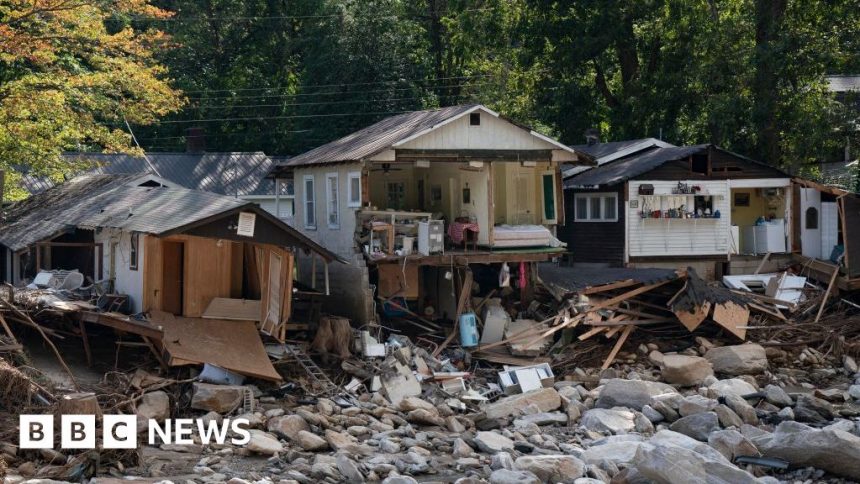Helene is deadliest mainland US hurricane since Katrina
The death toll from Hurricane Helene has risen to 200 as rescuers continue to search for survivors from the storm that tore across the US south-east.
More than half of the deaths were in North Carolina, where entire communities were uprooted and devastated by the deadliest mainland hurricane since Katrina in 2005.
Hundreds of people are reported to be missing and nearly a million homes are still without power nearly a week after the storm made landfall.
The rising death toll comes as President Joe Biden continues his two-day tour of the area visiting Florida and Georgia on Thursday.
Biden received an aerial tour of the damage in Tallahassee, Florida, on Thursday where the hurricane made landfall as a Category 4 storm last week.
The president has approved federal disaster assistance for survivors in Florida, Georgia, North Carolina, South Carolina and Virginia.
There are tens of thousands of people without running water in North Carolina, which has seen some of the most severe effects of the storm particularly in the mountainous area of Asheville.
“I feel like I just survived the apocalypse,” Nicole Rojas, a Vilas, North Carolina, resident told the BBC.
Hundreds of roads remain closed, hampering efforts to send aid to hard-hit communities.
South Carolina, Georgia, Florida, Tennessee and Virginia also recorded deaths from the storm.
An elderly couple died in bed when a tree fell on their home in South Carolina, their grandson told the Associated Press. He said they were found hugging one another.
North Carolina prisons on Wednesday relocated 800 inmates due to lack of power and running water, according to the state’s department of corrections. Over 2,000 prisoners were relocated from other prisons earlier this week.
Family members of prisoners told the Asheville Citizen-Times newspaper that they haven’t been able to contact their loved ones for more than a week.
Across the US south-east, over 933,000 customers remained without electricity on Thursday, according to Poweroutages.us.
More than 6,700 Army and Air National Guard members from 16 states are assisting with the on-the-ground response, according to the National Guard.
The president deployed 1,000 active-duty soldiers to help with the aid efforts.
On Wednesday, Biden and Vice-President Kamala Harris toured areas of North Carolina and Georgia respectively.
Biden said the federal government will cover 100% of all emergency protective measure and debris removal costs in North Carolina for six months. He will do the same for Georgia and Florida for the next 90 days.
Former President Trump toured damaged areas in Georgia earlier in the week.
More rainfall is expected in the coming days in parts of the Gulf Coast and Florida which could complicate the recovery efforts.
The Atlantic hurricane season continues until the end of November.
US Homeland Security chief Alejandro Mayorkas warned earlier in the week that if another storm struck the US in the coming months, the Federal Emergency Management Agency would struggle to provide assistance.
“FEMA does not have the funds to make it through the season and what — what is imminent,” Mr Mayorkas told reporters earlier in the week, referring to another hurricane hitting the US this season.
The Biden administration has shipped more than 8.8 million meals, 7.4 million litres of water, 150 generators and 225,000 tarps to the region, Mr Mayorkas said.
Two storms are currently brewing in the Atlantic Ocean. Hurricane Kirk, which is currently a Category Three storm, is expected to create dangerous surf conditions in Florida and the Caribbean islands, but not expected to make landfall in the US. Tropical Storm Leslie currently poses no threat to the US.
Brandon Drenon contributed to this report.




